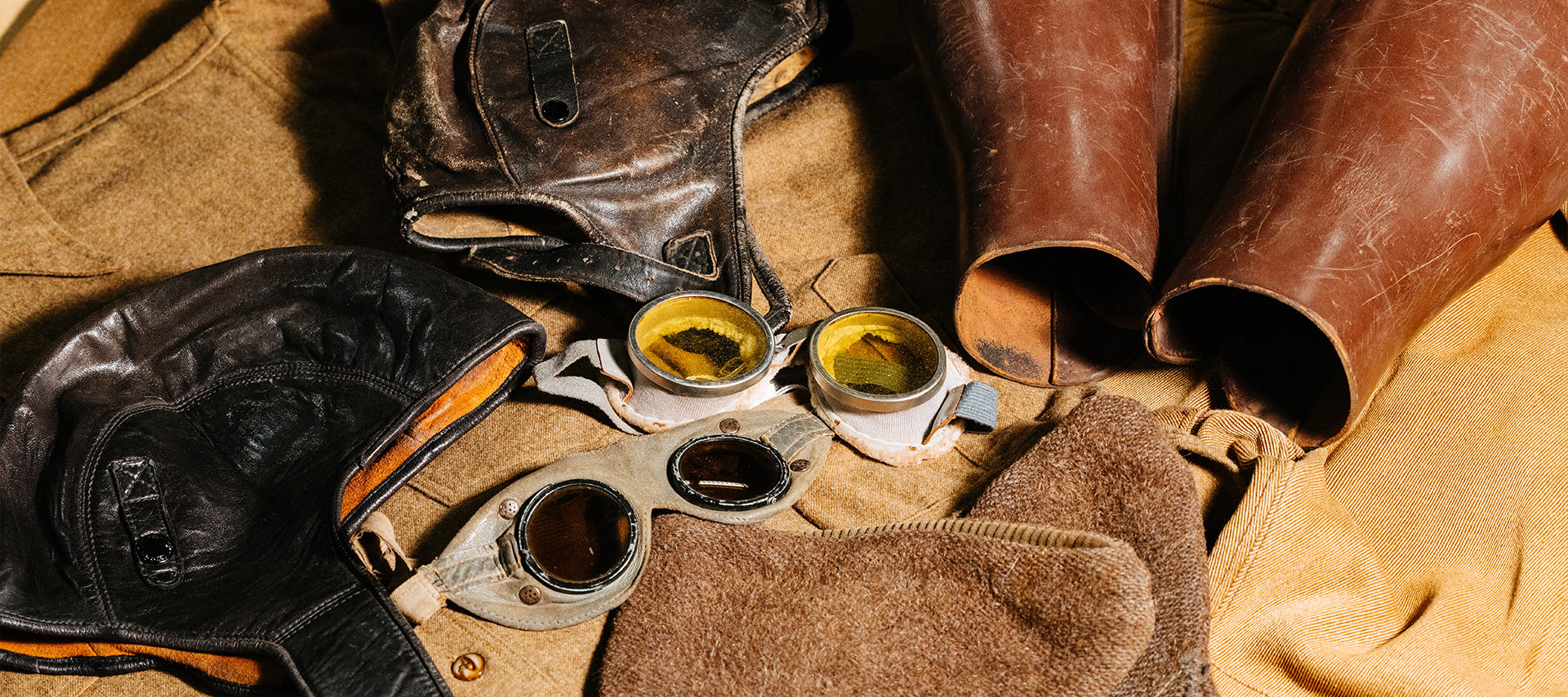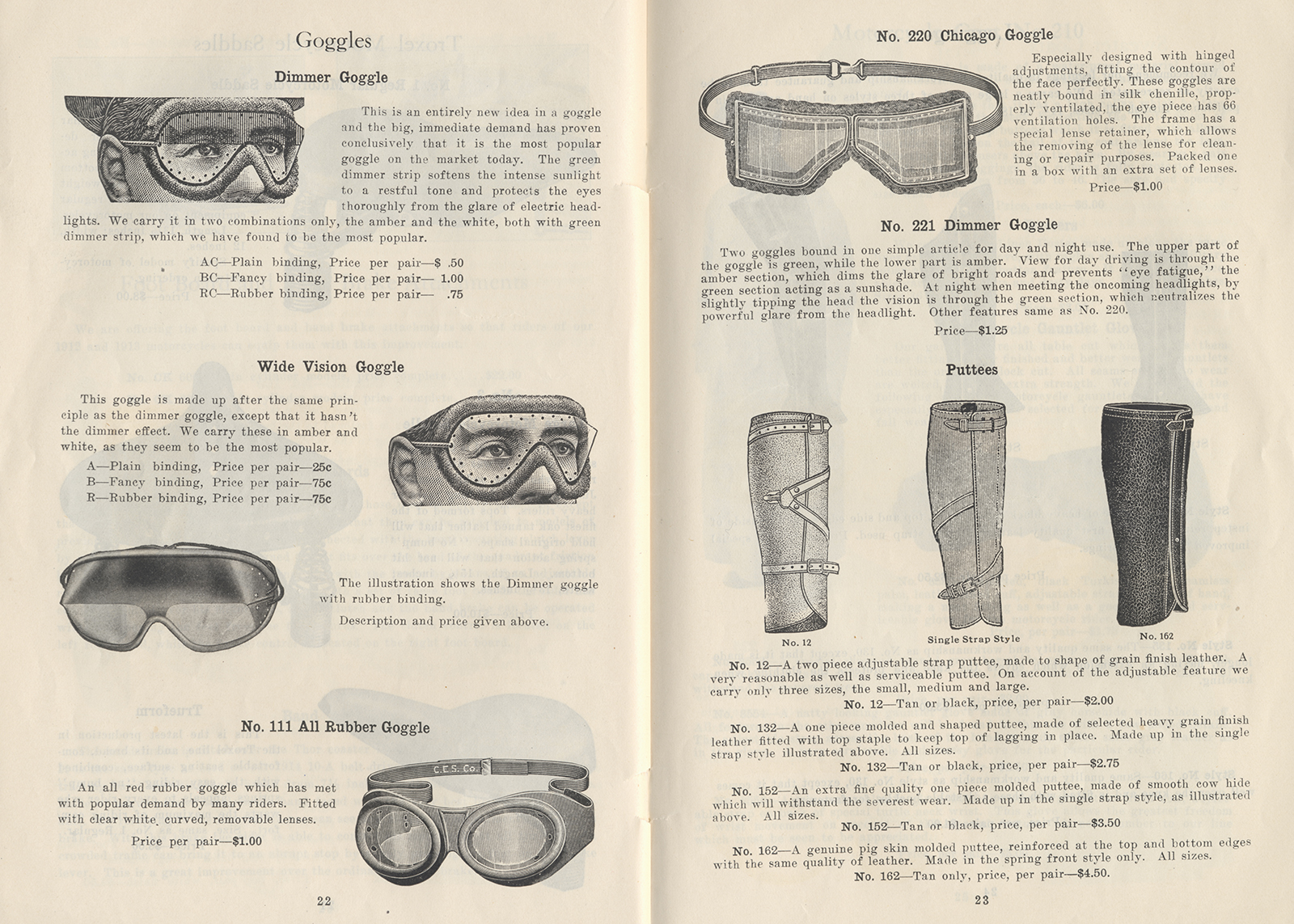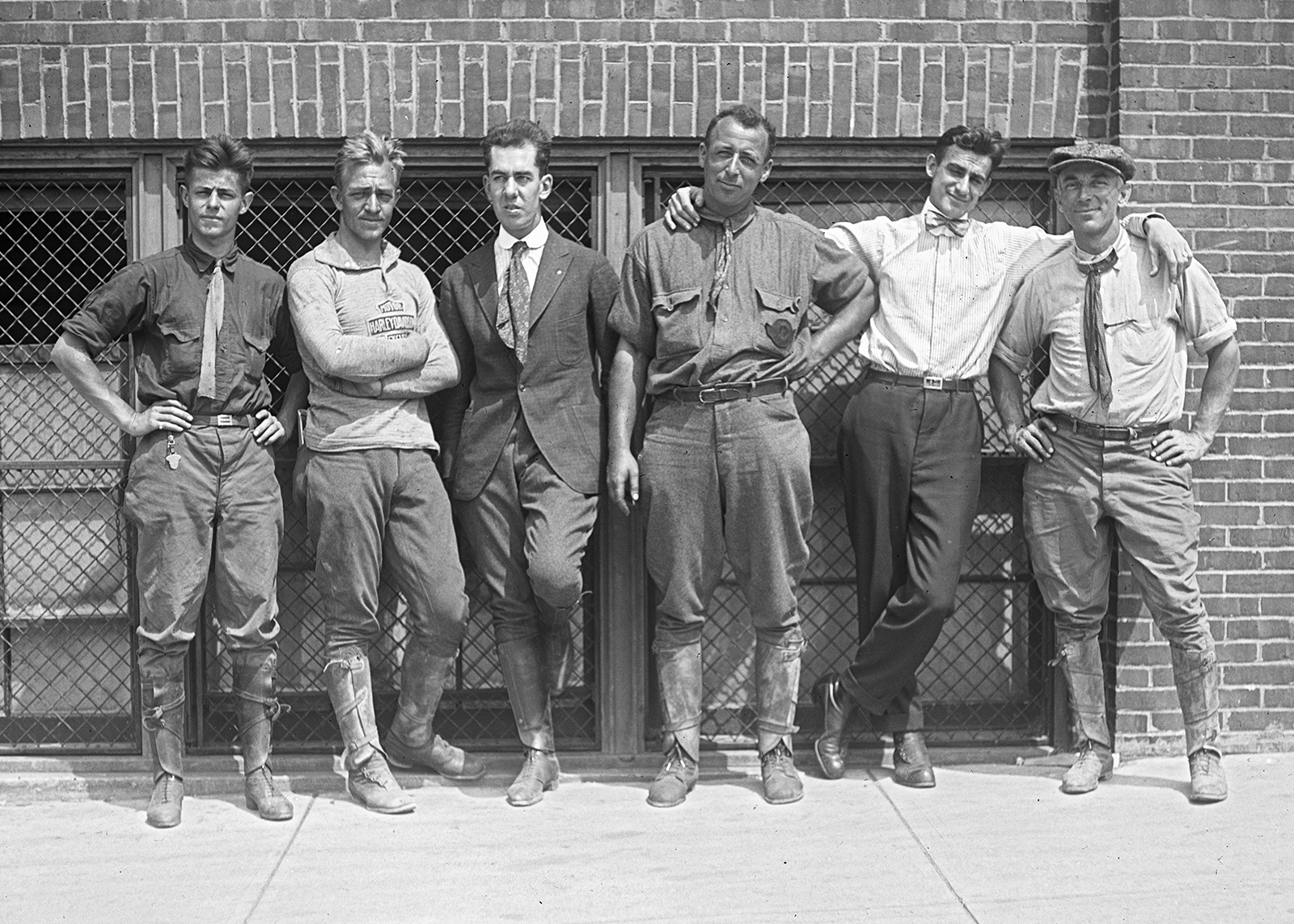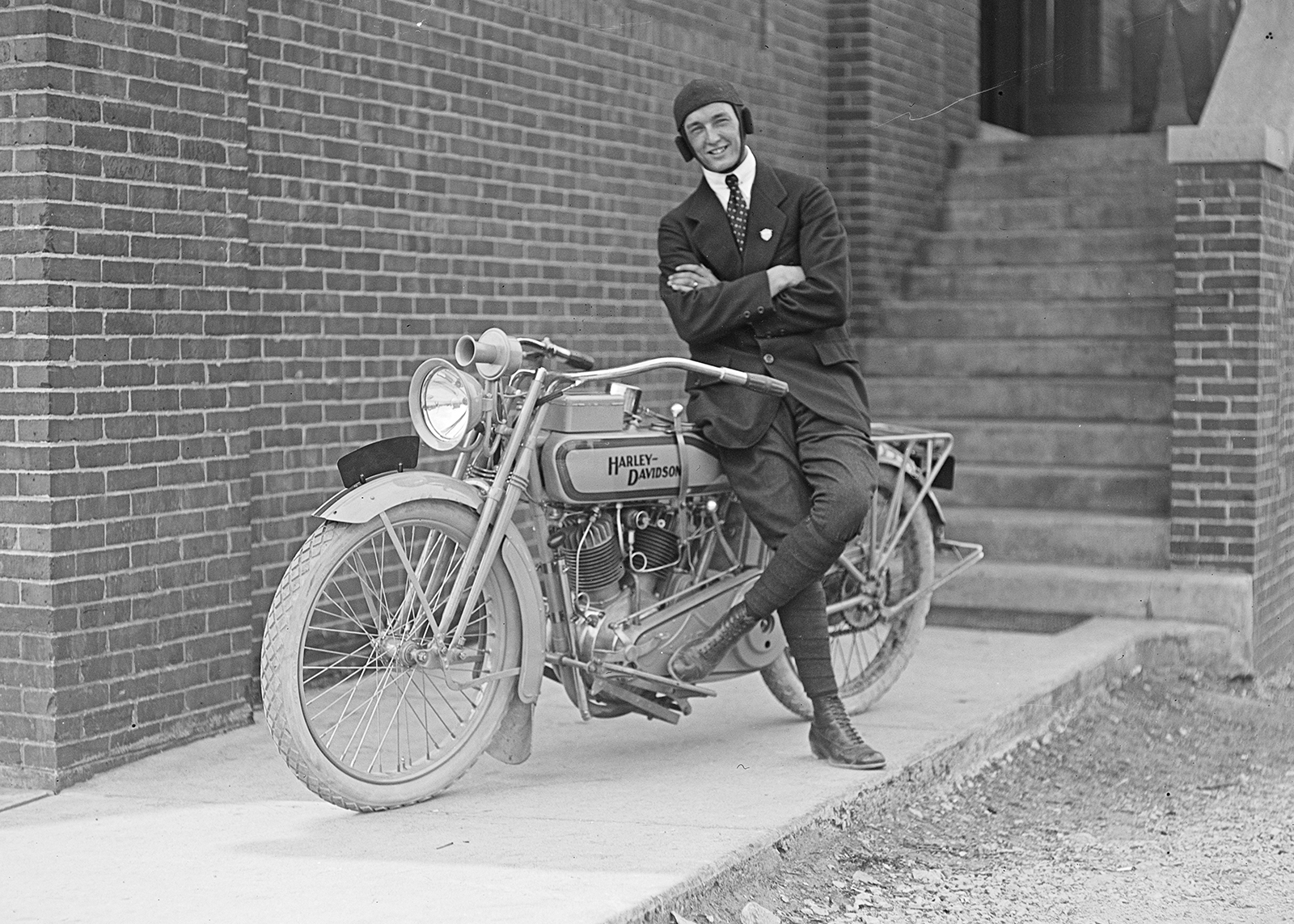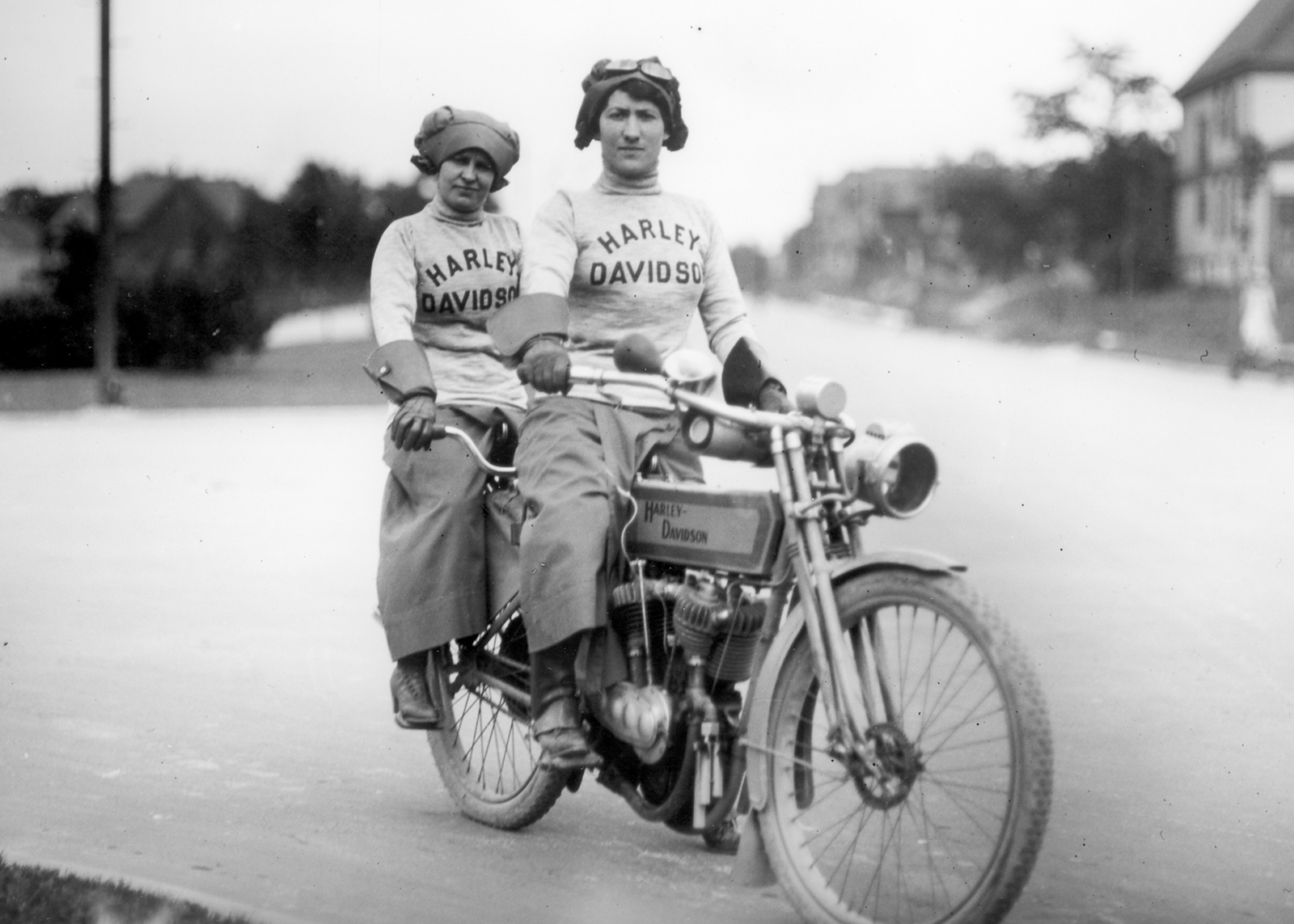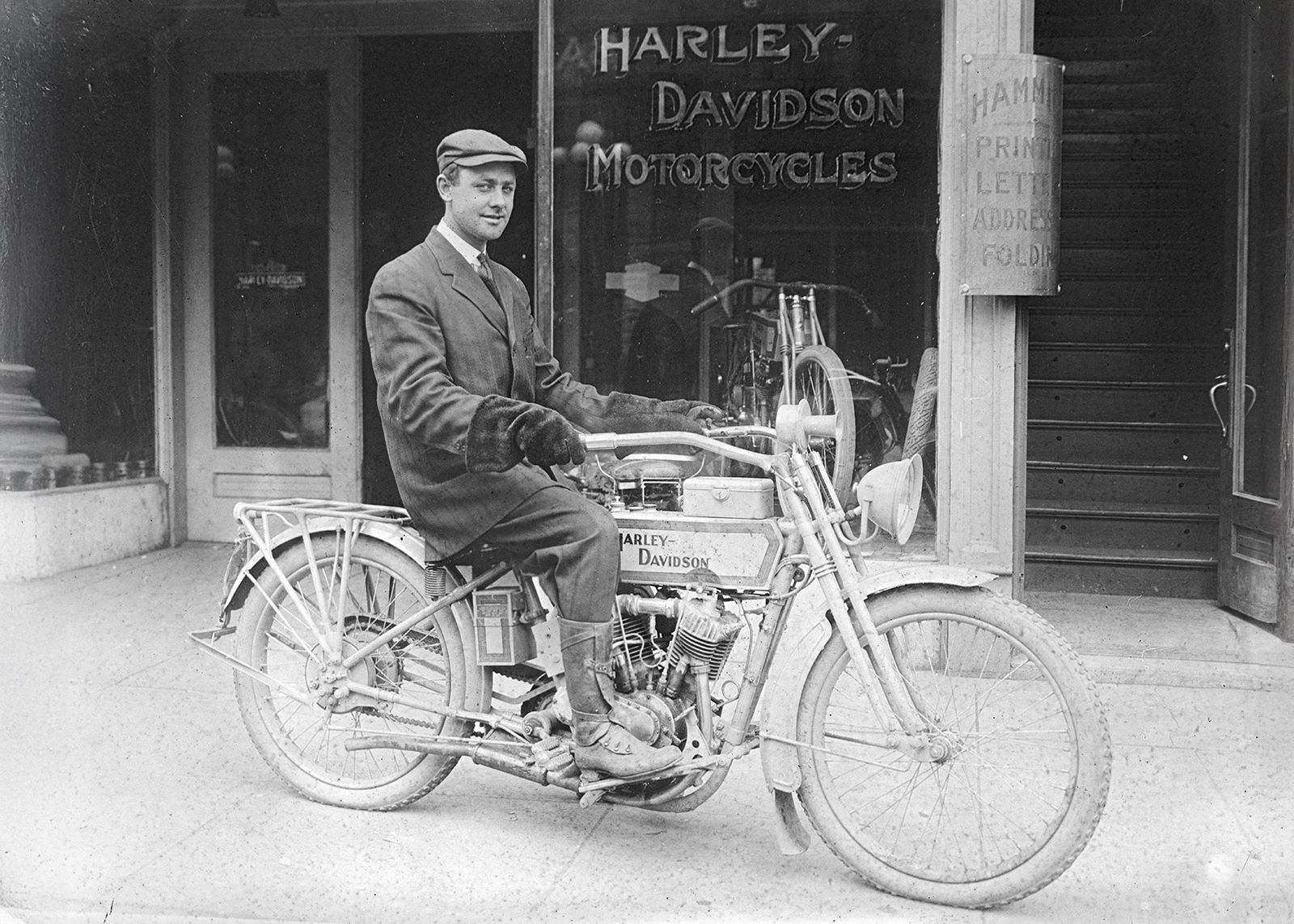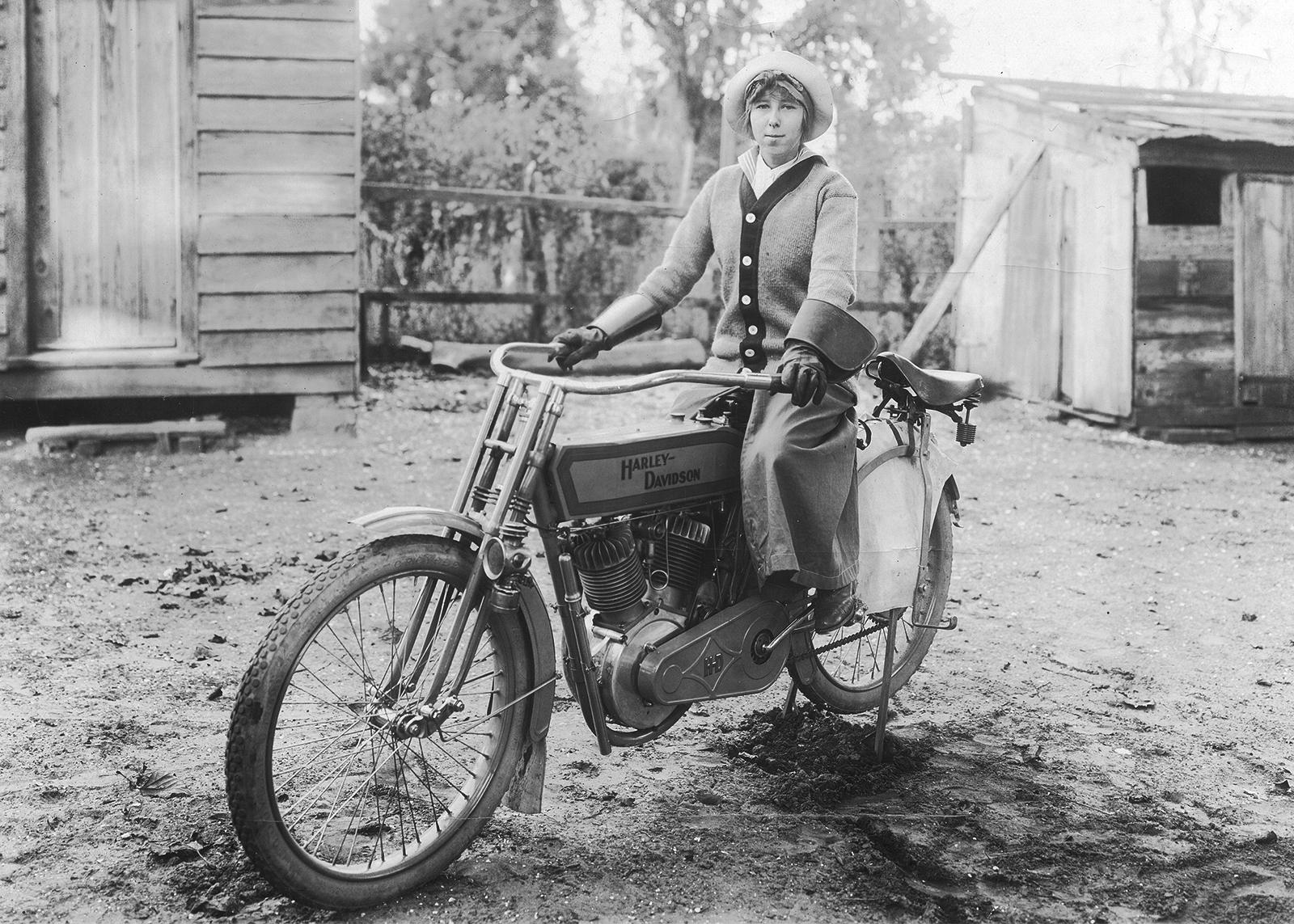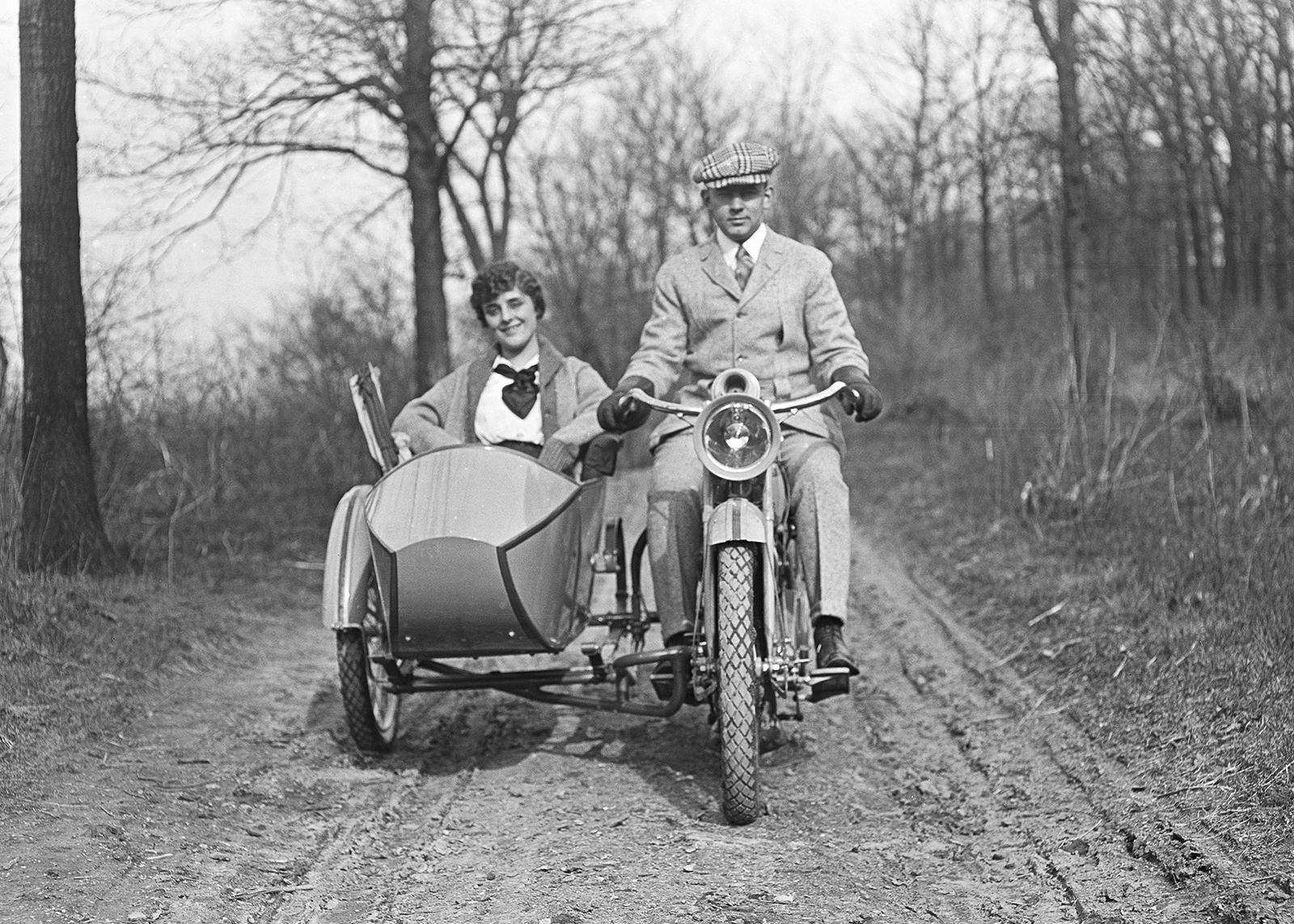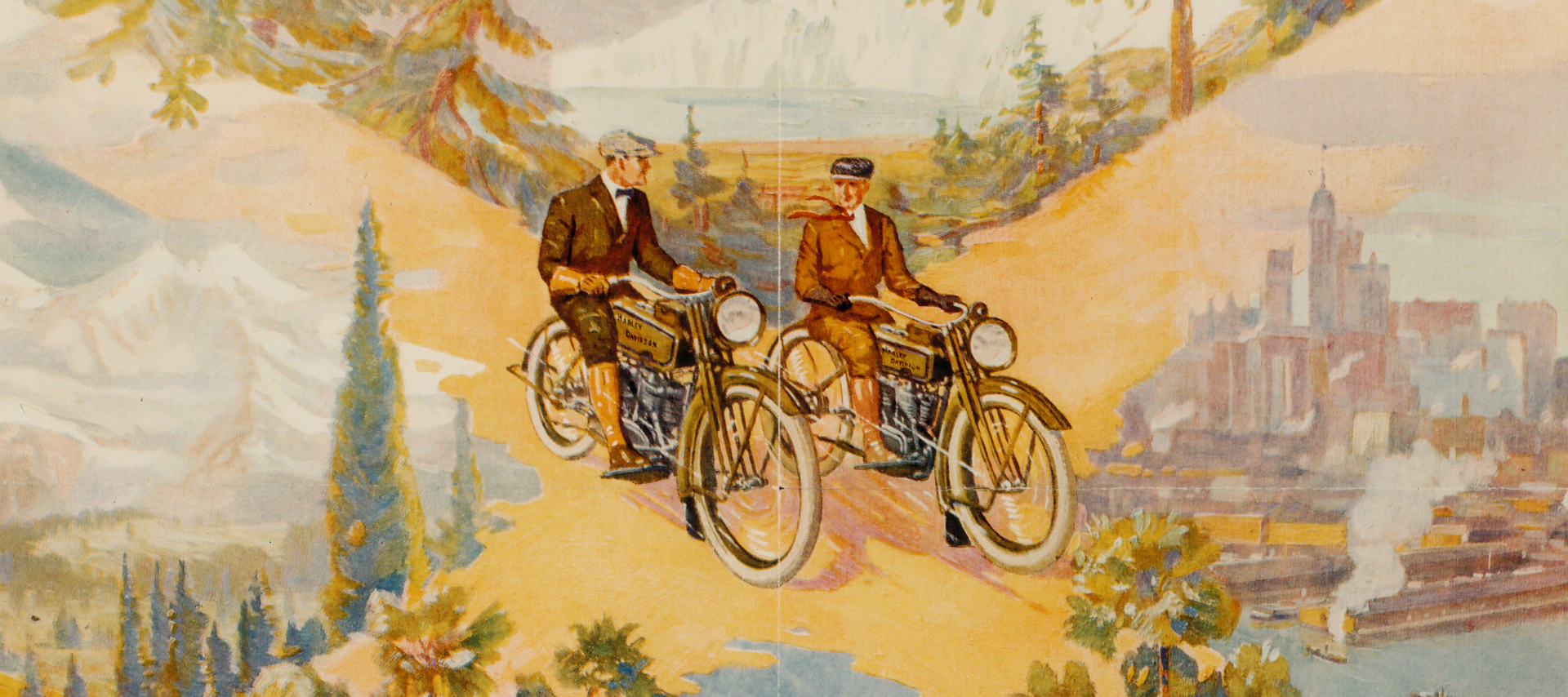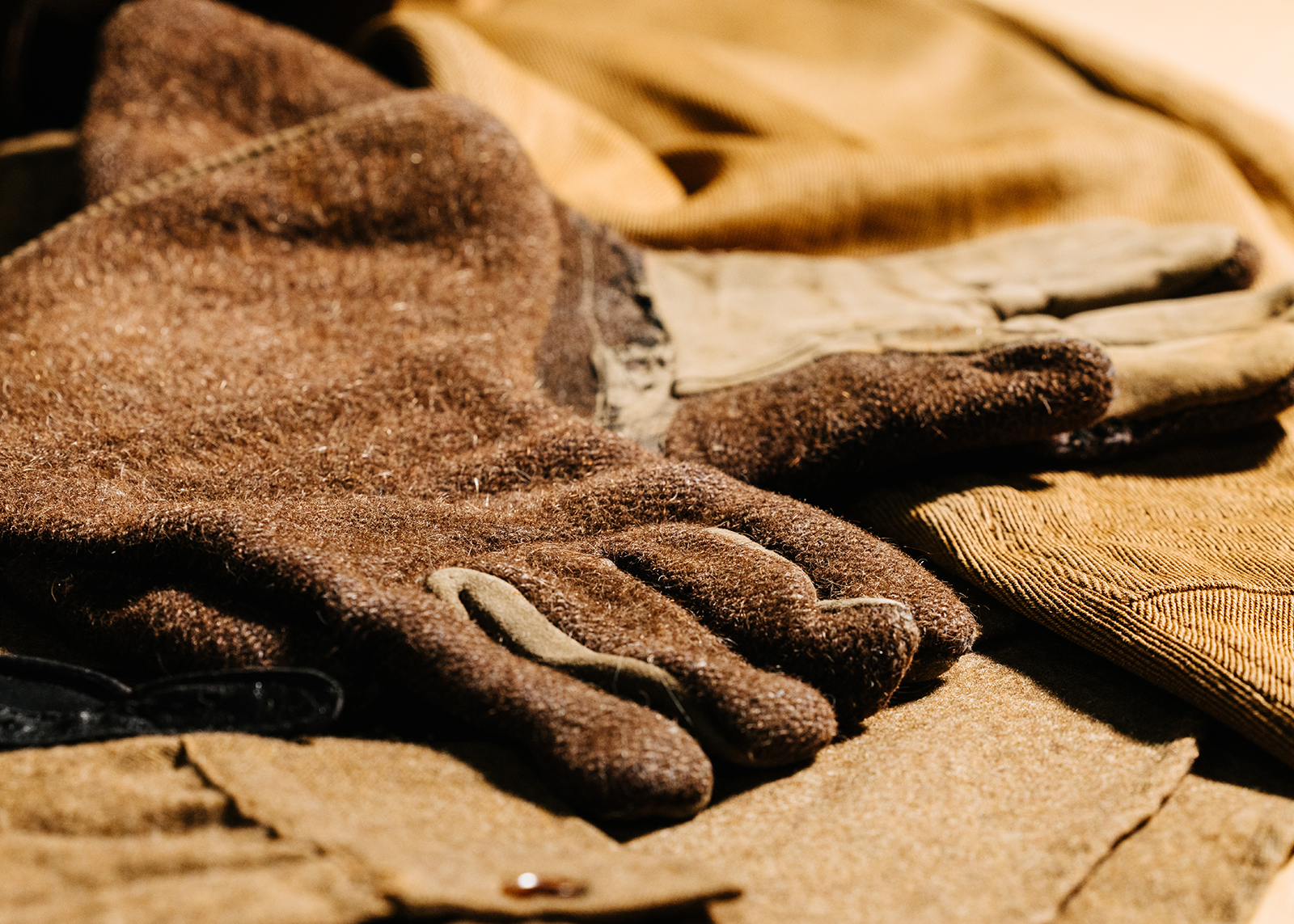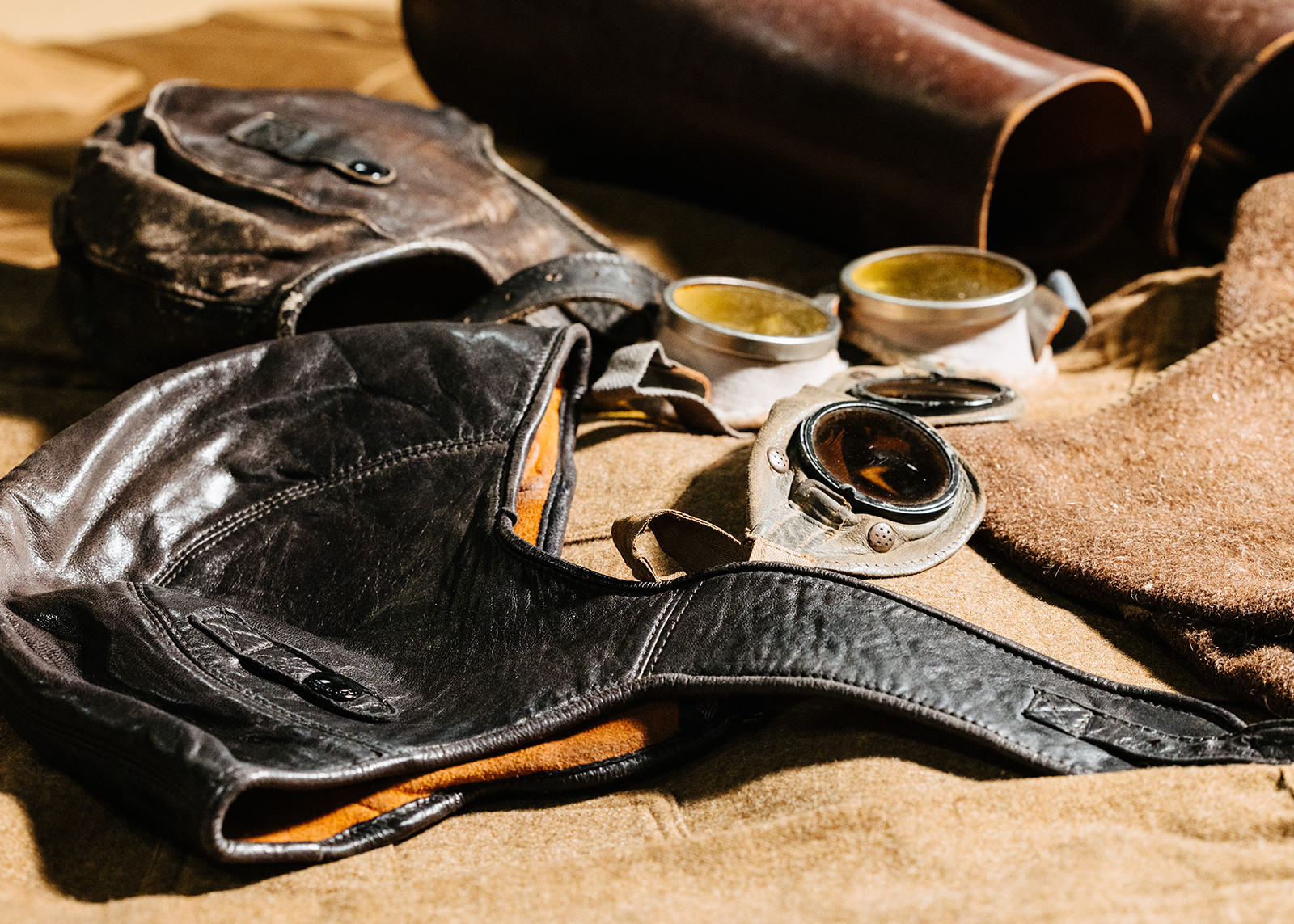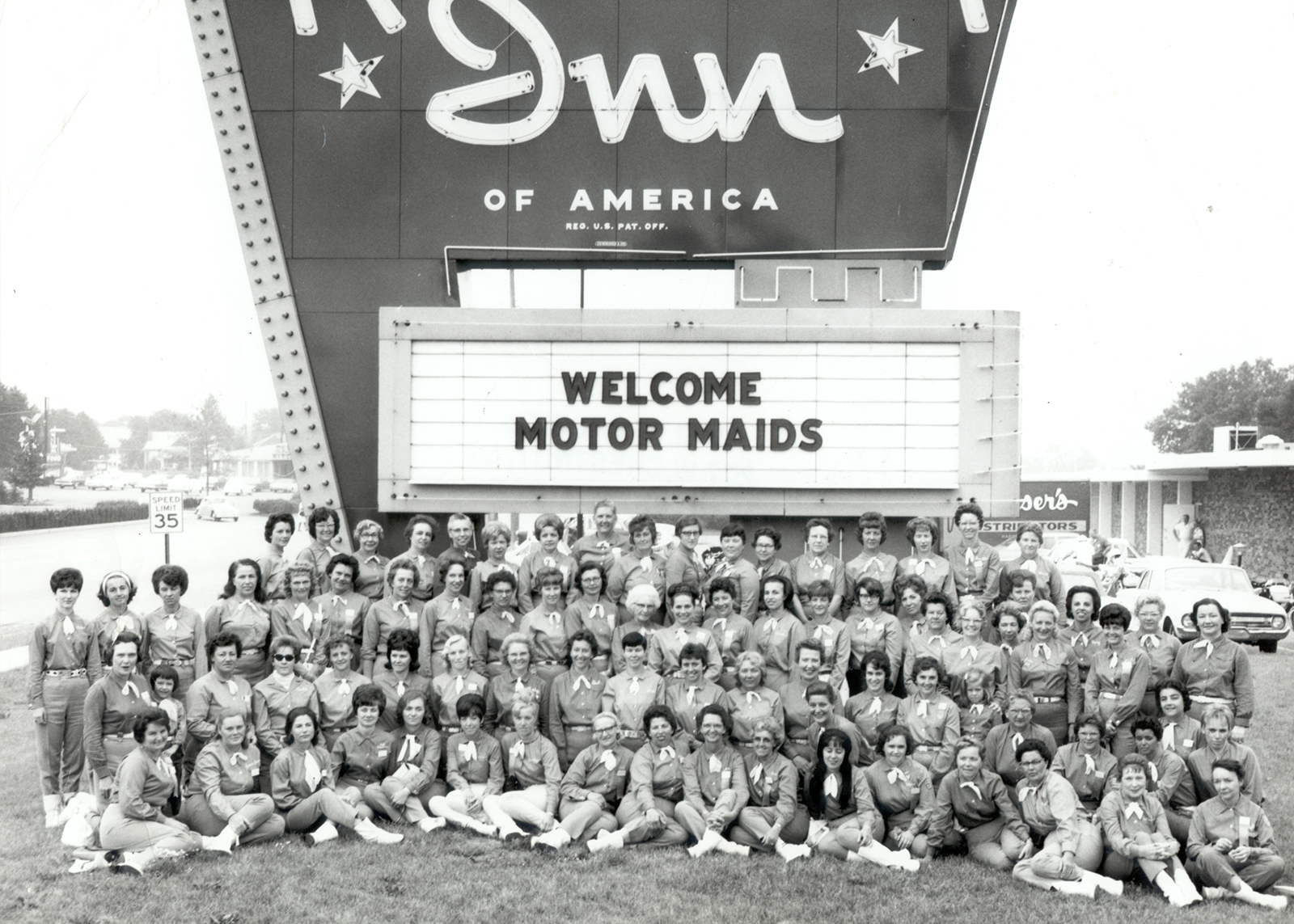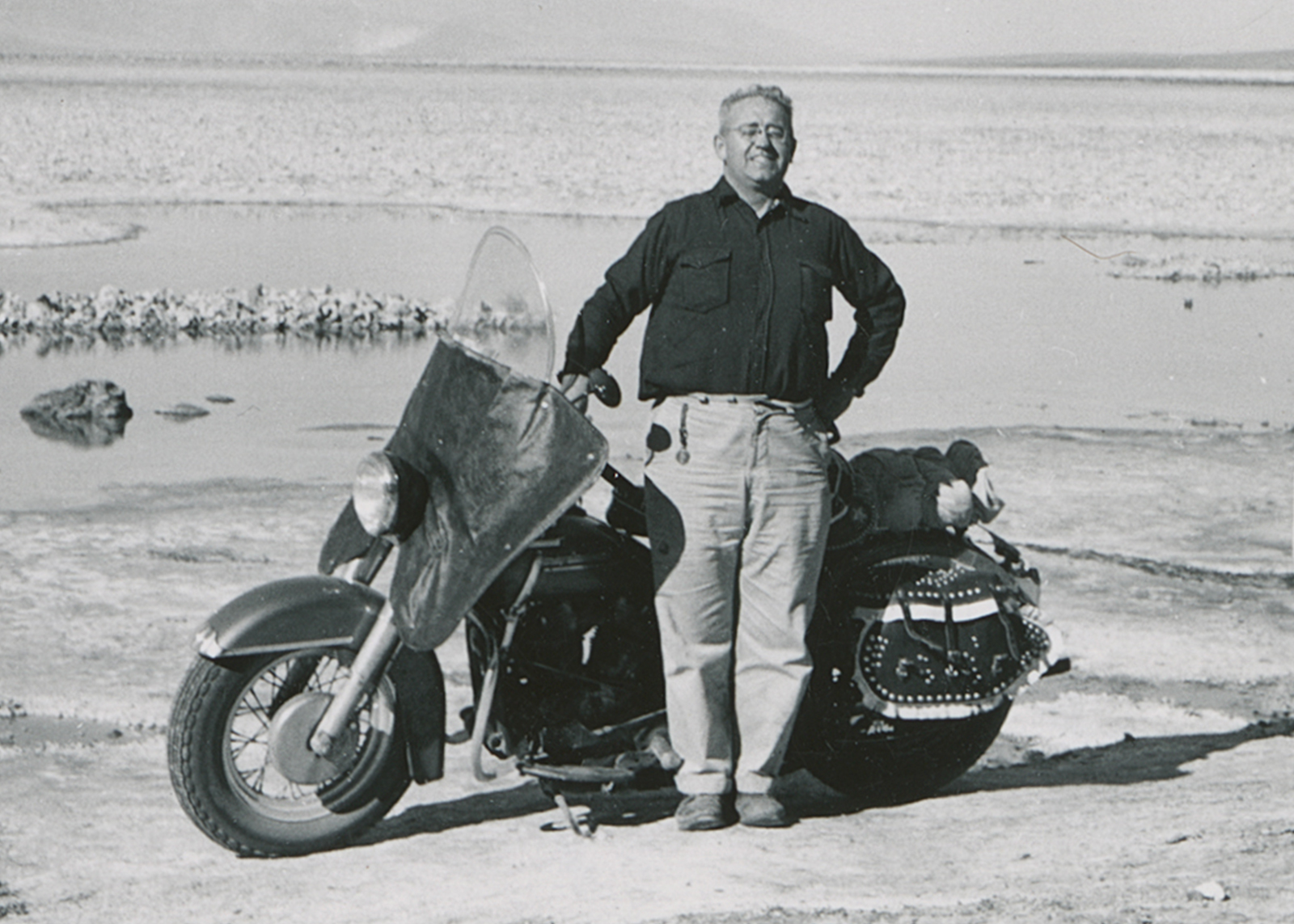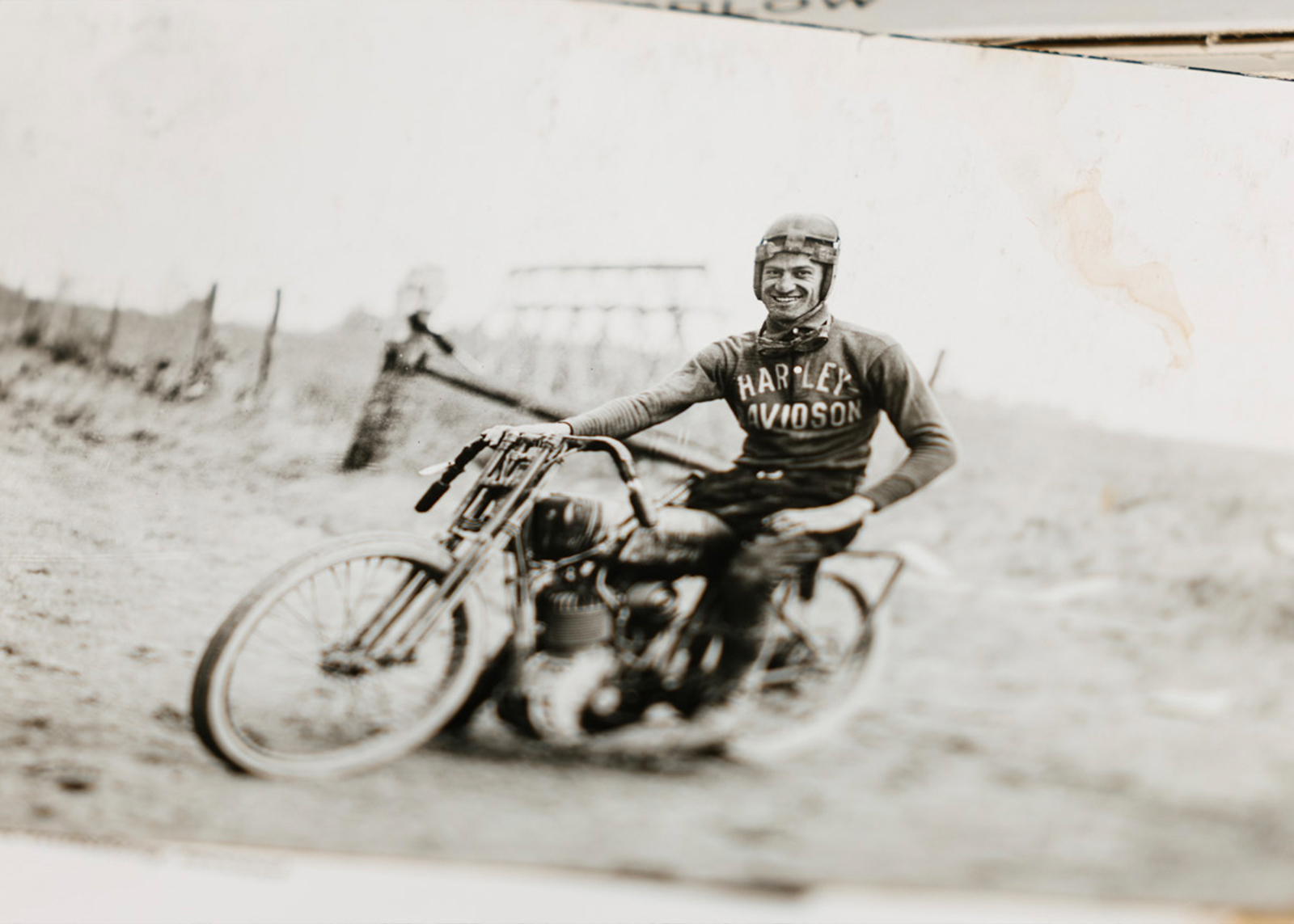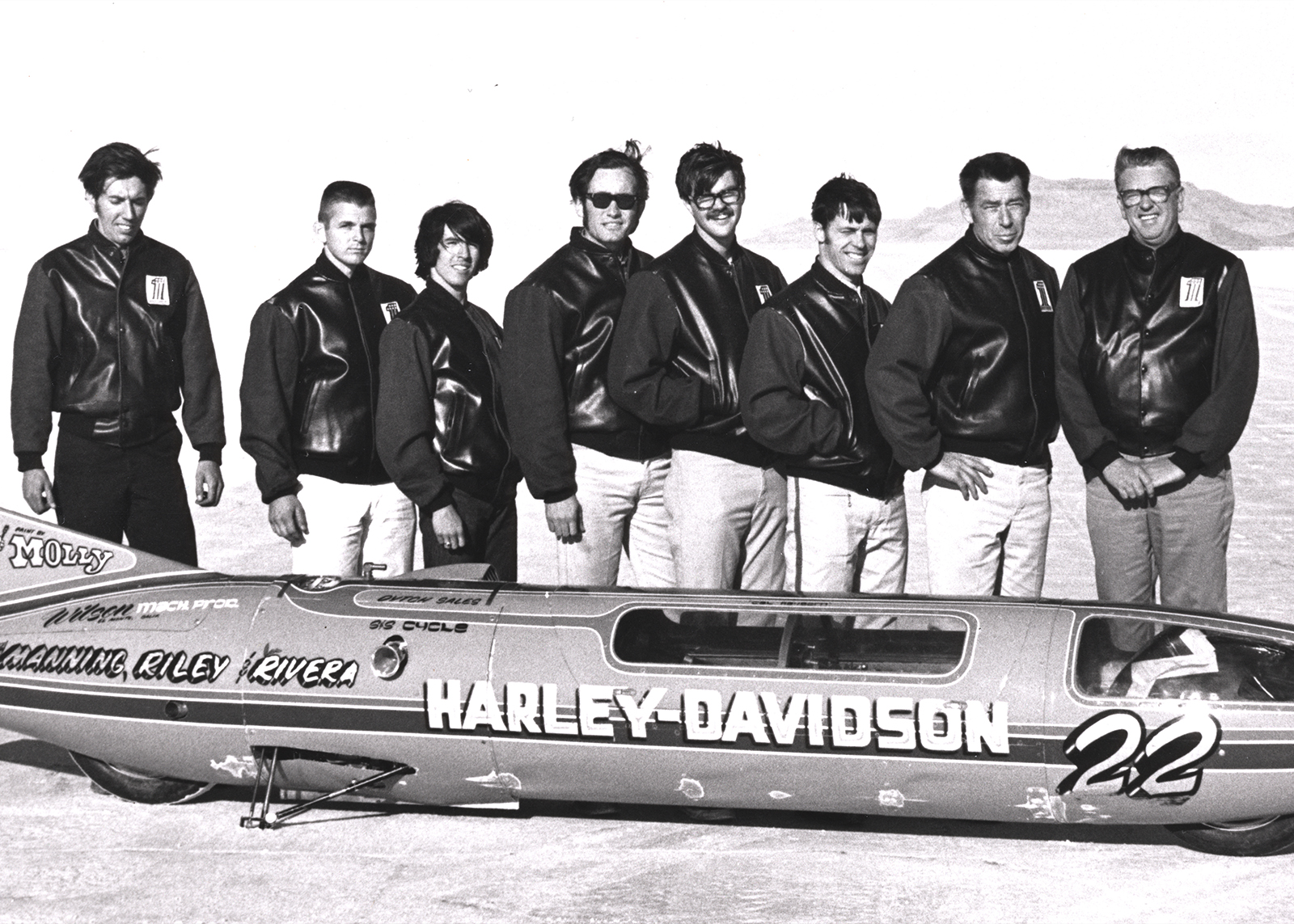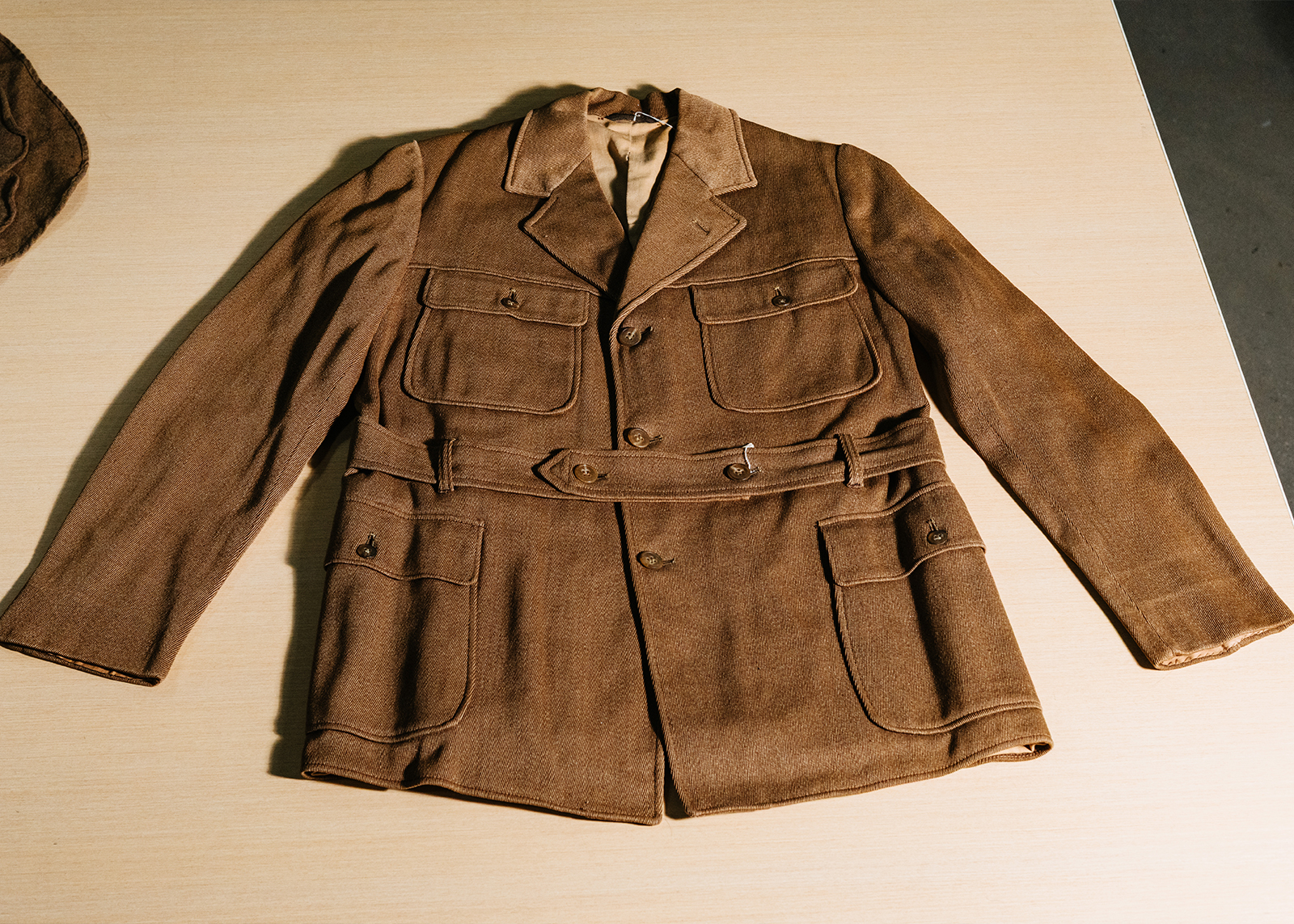
EARLY RIDING WEAR
In the earliest images in the Harley-Davidson archives, riders’ clothing always stands out. Instead of the black leather, jeans, bandanas and safety helmets associated with riding today, the style choices in the 20th century included three-piece suits, starched collars, flowing scarves, long skirts and no helmets.
To our eyes, they look conventional, if not stuffy—an image that clashes with the individuality and spirit of Harley-Davidson motorcycle riders. The reason has to do with the solid business sense of the early Harley-Davidson Motor Company. All motorcycle companies at the time were marketing a relatively new and untried product. For a growing business in an unfamiliar industry, as Harley-Davidson was in the 1910s and 1920s, it was important to have broad appeal.
Harley-Davidson used marketing and advertising to relate to the masses. They reached out to the business owner who needed a way to serve customers more efficiently, the city dweller who sought an easy way to get away for the weekend, and the worker who wanted an affordable means of transportation that offered more freedom than the streetcar or sidewalk.
Part of appealing to conventional interests meant presenting an image of the early rider that reflected the conventions of dress at the time: from the suit of the office worker to the uniforms of delivery workers and the “Sunday-best” traveling outfits worn by daytrippers. This was an era when the conservative and impeccable was considered the only proper way to present oneself in public, and motorcyclists in the first three decades of the 20th century certainly reflected the status quo of fashion in American society.
But the clothing worn by motorcyclists was not entirely conventional. There were items designed or adapted to meet the particular needs of the motorcycle rider.
For instance, the unprecedented speeds achieved by the motorcycle resulted in harsher wind effects than those experienced on more common and slower means of transportation. As a result, long-wristed, sturdy gauntlets were created to provide extra protection for the wrists and lower arms and especially to prevent wind from blowing up the coat sleeve—a curse for the early rider and one that could not be prevented by traditional short-wristed gloves.
CONSERVATIVE AND IMPECCABLE WAS CONSIDERED THE ONLY PROPER WAY TO PRESENT ONESELF IN PUBLIC, AND MOTORCYCLISTS IN THE FIRST THREE DECADES OF THE 20TH CENTURY CERTAINLY REFLECTED THE STATUS QUO OF FASHION IN AMERICAN SOCIETY.
Because motorcycle riding shared traits with horseback riding, the high boots and wide pants of equestrians were adapted for motorcycle use. The pants, called jodhpurs, allowed freedom of movement for the knees and hips. And the high boots provided the necessary protection from the heat of the engine and the constant barrage of debris thrown up from the dirt roads that were an inescapable part of travel at the time.
Long-distance riders and racers took the protection provided by high boots one step further by creating the "puttee," an ultra-heavy, strap-on lower leg shield that offered the necessary armor against the relentless punishment dished out by dirt tracks traversed at high speeds and dirt roads on long runs.
Though riders donned many types of hats, given headwear was appropriate dress for the time, riders’ protective gear also included lightweight helmets and riding or motoring caps. These added to the sense of propriety for riders, especially women, as it helped shield their hair from dirt and wind in addition to providing modest protection and keeping hair from the face. Goggles were another early layer of protection, appearing in Harley-Davidson parts & accessories catalogs as early as 1915.
HARLEY-DAVIDSON KNEW THE BUSINESS NECESSITY OF APPEALING TO THE GENERAL POPULACE, WHICH PUT GREAT VALUE ON NEATNESS AND PROPRIETY OF DRESS.
Harley-Davidson and its dealers also promoted the purchase of specially designed riding suits, for both protection from the road and appropriateness of dress. As described in a 1916 ad: "…[here] is a natty suit, obtainable either in government khaki or moleskin cloth, that was exactly what most riders wanted. It incorporates several ideas that were suggested by men at the factory who have had much experience in road riding under varying weather conditions." Khaki was an extremely durable material and moleskin cloth was known for its warmth and, as advertisements said, "while not classed as waterproof, moleskin will stand a pretty fair shower."
This made these riding suits practical riding gear. But these suits and other Harley-Davidson clothing, while designed with rider comfort and safety in mind, were not meant to make the rider stand out. Instead, Harley-Davidson knew the business necessity of appealing to the general populace, which put great value on neatness and propriety of dress. As the company wrote to the dealer in the advert:
"The advantages to the dealer of having his riders neatly dressed have been described so often that upon this subject everyone undoubtedly agrees. In line with our policy of practicing what we preach we are seeking to co-operate with dealers in improving the style of riding suits."
Despite the emphasis on neatness, practicality and conventionality, it is a mistake to assume that early Harley-Davidson motorcycle riders did not value individuality and adventure. Early riders were, after all, taking a risk with a relatively untested form of travel. And they certainly showed their spirit of adventure in trying a new sport and a new way of getting away from the weekly routine. Even if their clothing was conservative, their spirits were not.
Change happens gradually, and as the motorcycle became more accepted, riders found new ways to stand apart from the crowd, from customized motorcycles to personality-driven riding gear.
EXPERIENCE THE HISTORY OF HARLEY-DAVIDSON
Discover culture and history through stories and exhibits that celebrate expression, camaraderie and love for the sport.

